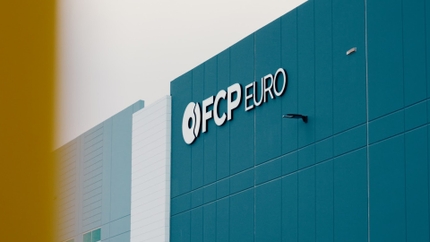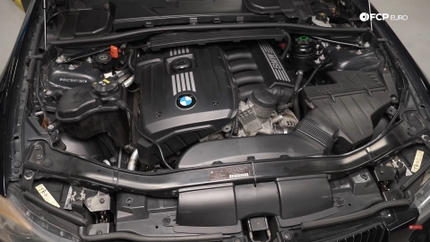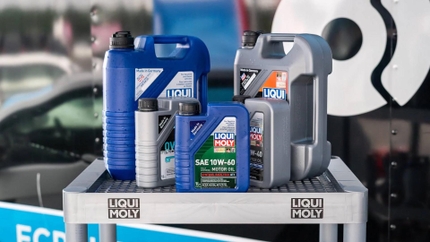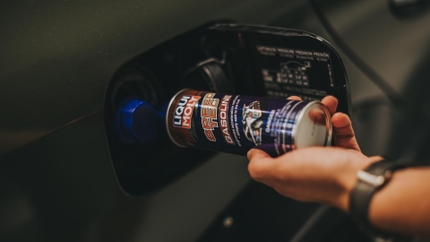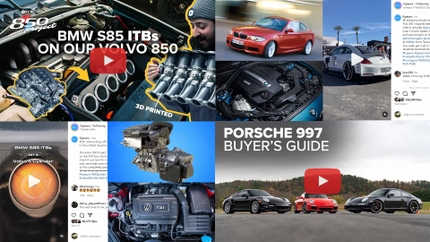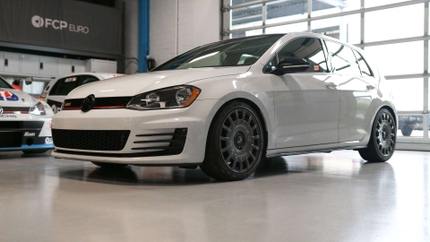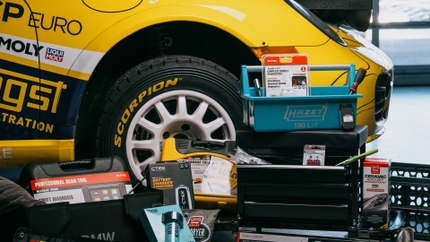- 10/31/2019
- 5 Min Read
- By: Antonio Alvendia
Long Time Endurance Racer – 1969 Porsche 911 Vintage Race Car
With over two decades of racing history, this 911 is still shredding hot laps in the hands of Porsche Factory Drivers and has aged like a fine whiskey. What’s the secret to its longevity?
For over two decades, this classic Porsche racecar has caught the eyes of Porsche's own factory drivers. That includes Luftgekuhlt founder Patrick Long, who even built a steet-driven replica of this 911 racer. In the picture above, you can even see Long's trademark helmet. However, the build up of this 911 didn't begin as a whole car.
“I built this car almost 20 years ago,” said Chad Plavan, the owner of this 1969 Porsche 911, “I had purchased it in pieces in 2000 and it started life as a 911 E.” If you’re not a historian of the 911, you’re probably wondering what a 911 E actually is. If you are, you’re probably wondering why the body doesn’t look as narrow as a standard 911 E. Let’s begin by talking about what a 911 E is, as that will transition as to why the body is wider than how it started out at the beginning of its life.

Around 1969, Porsche introduced an updated version of the 911 known as the B-series. It was slightly longer to help tame some of the tail-happy character of the previous 911 bodies. Along with that, a new middle-of-the-road version of the 911 was produced–the aforementioned 911 E, which replaced the single year 911 L. It was situated between the 911 T (T stands for Touring) and the top of the line 911 S.
Additionally, if you’re a proper Porschephile, you’ll call this a “long nose” car since it predates the introduction of the impact bumpers beginning in 1974 and the start of the G-series 911. The 911 E design fit the Vintage Auto Racing Association (VARA) C Production and Historic Sportscar Racing (HSR) rules Chad originally raced in. This limited him to a non-flared body and a 15x7 sized wheel both in the front and the rear. “The way my car was built originally, it was very ‘vanilla’ compared to the other 911s that were racing in the series,” laughed Chad. So, he went about and changed the body for wider wheels and tires.
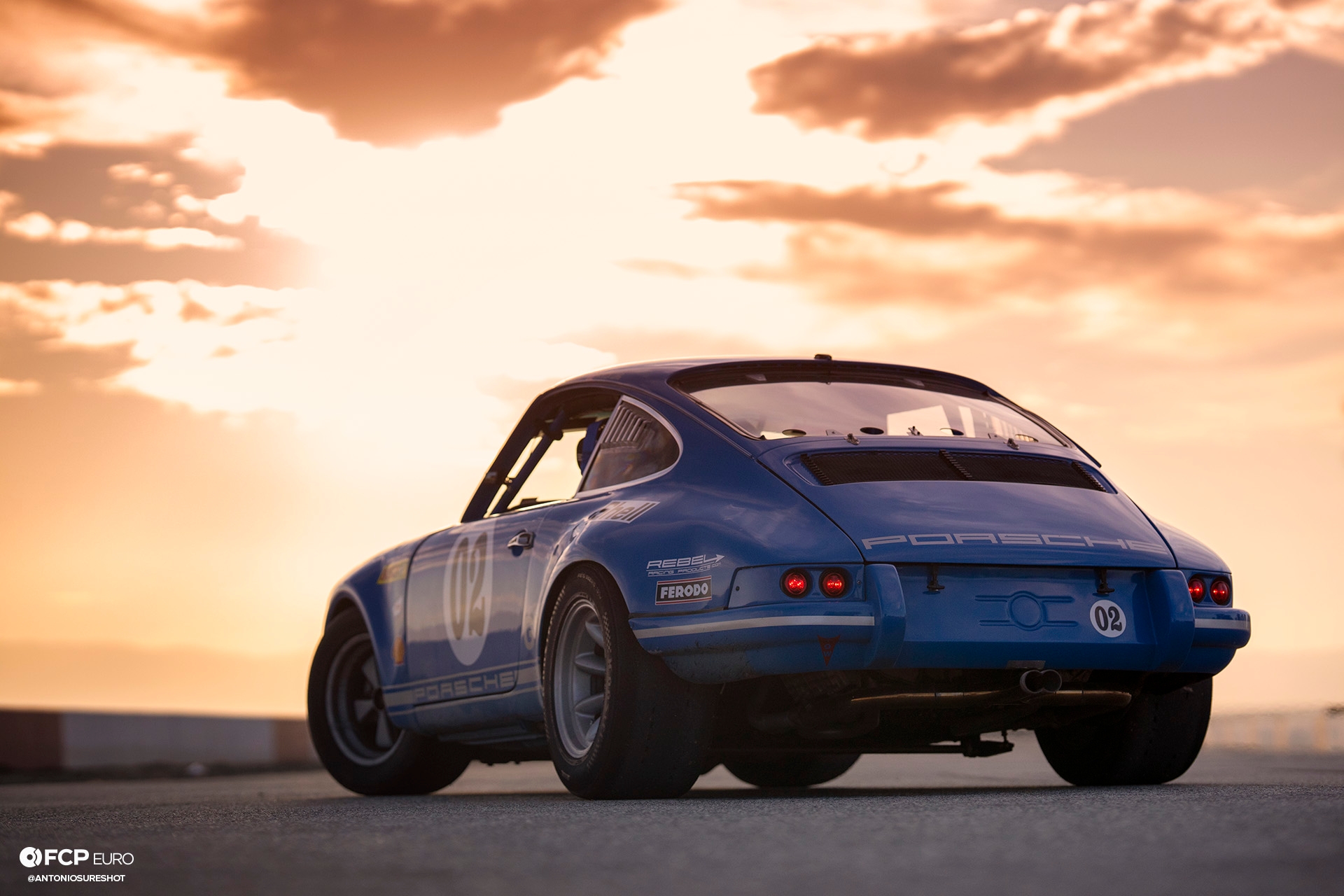
You’re probably looking at it now and saying, “Oh, he recreated a 911 RS, but the ducktail spoiler is missing.” Not quite.
This car’s new fenders are not only true sheet metal–made the old school way by handcrafting the flares on an English Wheel–but also copied from a set of original 911 ST fenders. Now you’re probably asking what the heck a 911 ST is.
The 911 ST was an extremely limited run race car by Porsche between 1970 and 1971 with only 23 or 24 cars made, depends on who you ask. Unlike the RS, these cars were specifically made to run in the 24 Hours of Daytona, the Targa Florio, and the 1000KM of Nurburgring. “I raced the E version for about 10 years,” said Chad, “then I converted it to the 911 ST configuration in 2010. I always loved the look, and I wanted to experience the better grip from using wider tires.”

Of course, being a race car, you’re not going to find a leather-clad interior or a custom sound system. It’s a purpose-built machine and made to bang wheels. Well, not on purpose, but it’s far from its original street-worthy design of the 911 E. What all is here is made purposefully and by the requirements – or limitations – of the rules.
You’ll also find yourself surrounded by the jungle-gym of tubes that make up the roll cage. It’s custom made from 1.5-inch drawn-over-mandrel (DOM) steel tubing before it was painted to the same Arrow Blue as the rest of the interior is. This is also the same color as the exterior.

The important thing to note is that this is a race car, but one made for longevity. The Auto Meter Autogage tachometer features memory recall and the ability to install a shift light. Instead of maximum RPM, the shift light comes on at 7900-RPM to help save the engine. The engine can rev much higher than that but it also reduces its lifespan.
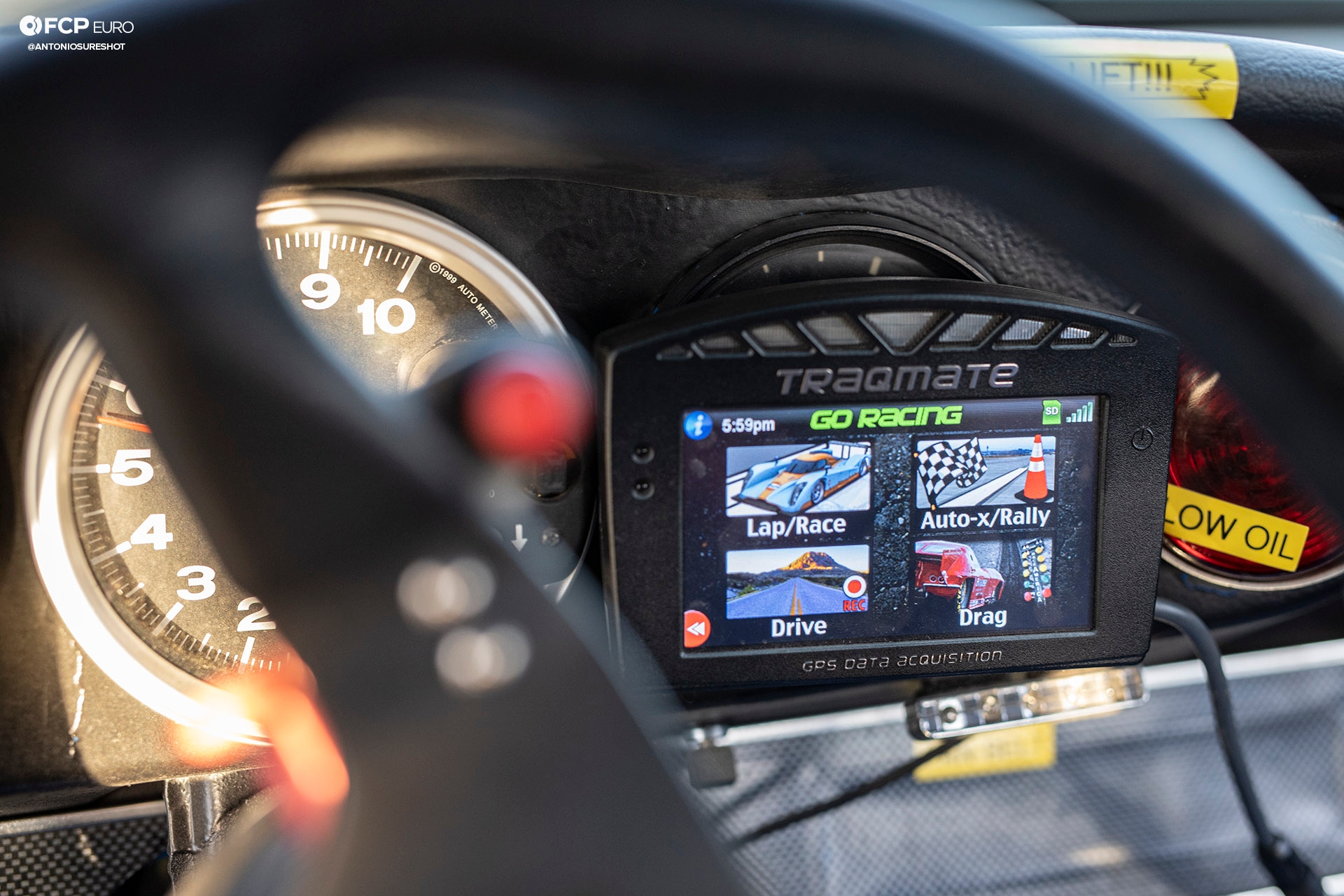
The only bit of high-tech installed in this vintage racing 911 is the Traqmate data logging system. It uses a GPS along with accelerometers to monitor the vehicle’s performance and read lap times as well as record the data on an SD card. Unfortunately, despite its popularity with grassroots and budget racers, the brand is now defunct.
Just to the right of it, you’ll spot the giant truck light used to signal Chad when there is low oil. It will be hard to miss that, but that is a good thing when it comes to an air-cooled vehicle. The oil is not only the lubrication of the engine but also the only way the engine can shed heat in these classic 911s.
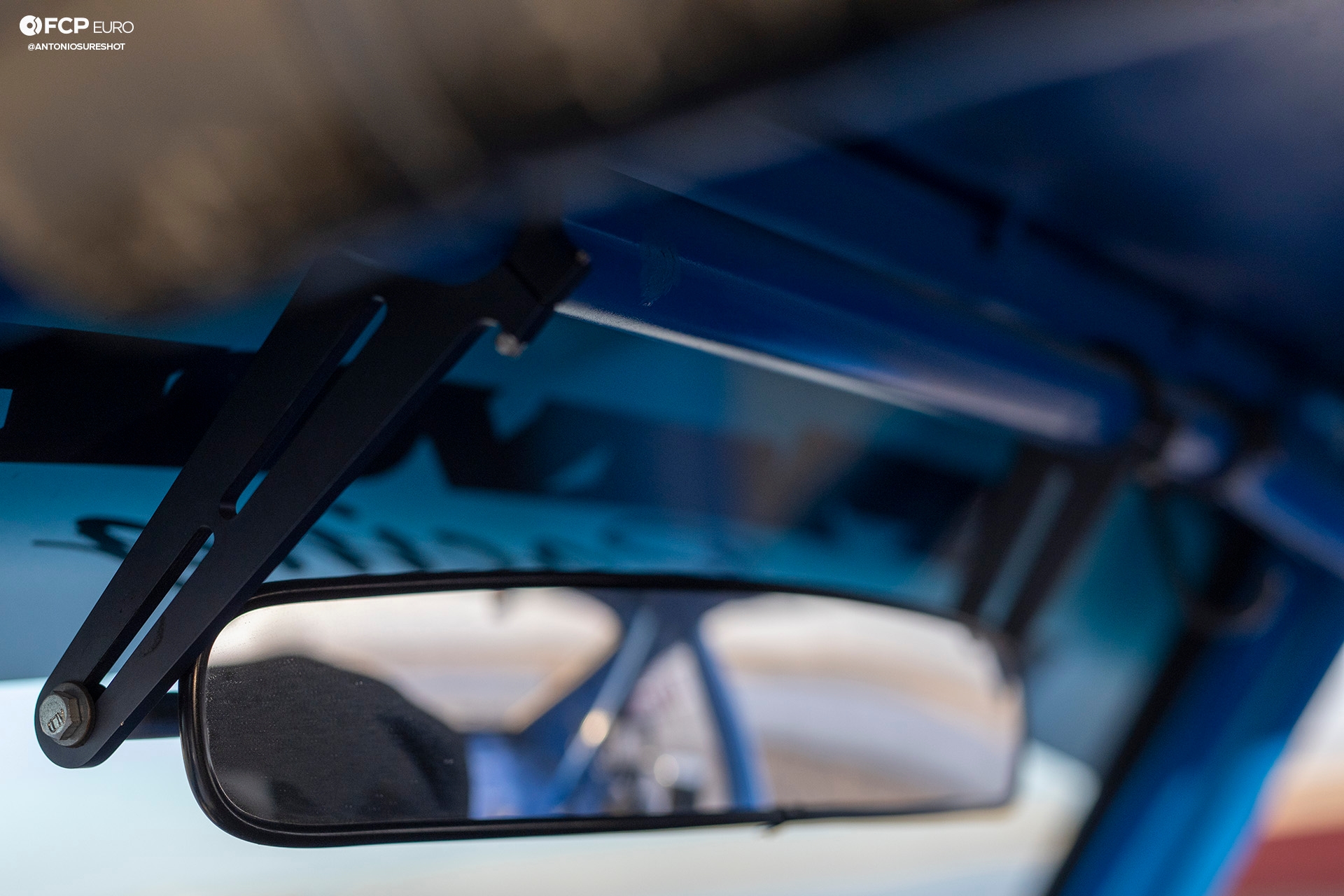
Since this racing 911 lacks exterior mirrors on the doors, Chad must rely on a convex interior mirror that’s attached to the top roll bar. Despite how it looks, he has clear rearward visibility from left to right. We don’t recommend this for a street-driven vehicle but it’s great for a race car.
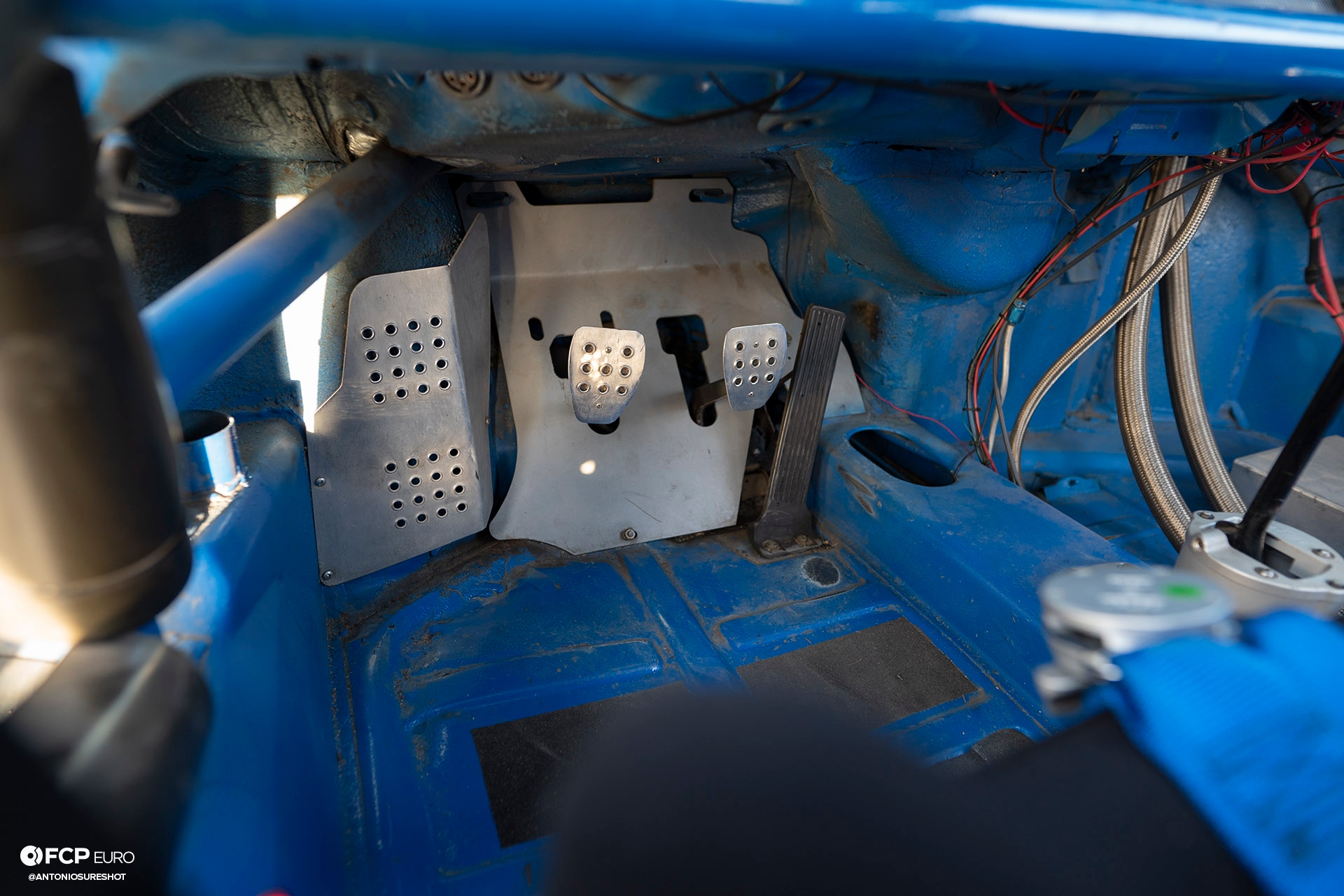
The pedal box is standard parts with the addition of a sheet metal footrest and metal covers on the clutch and brake pedals. The original pedalboard has also been replaced by an aluminum version.
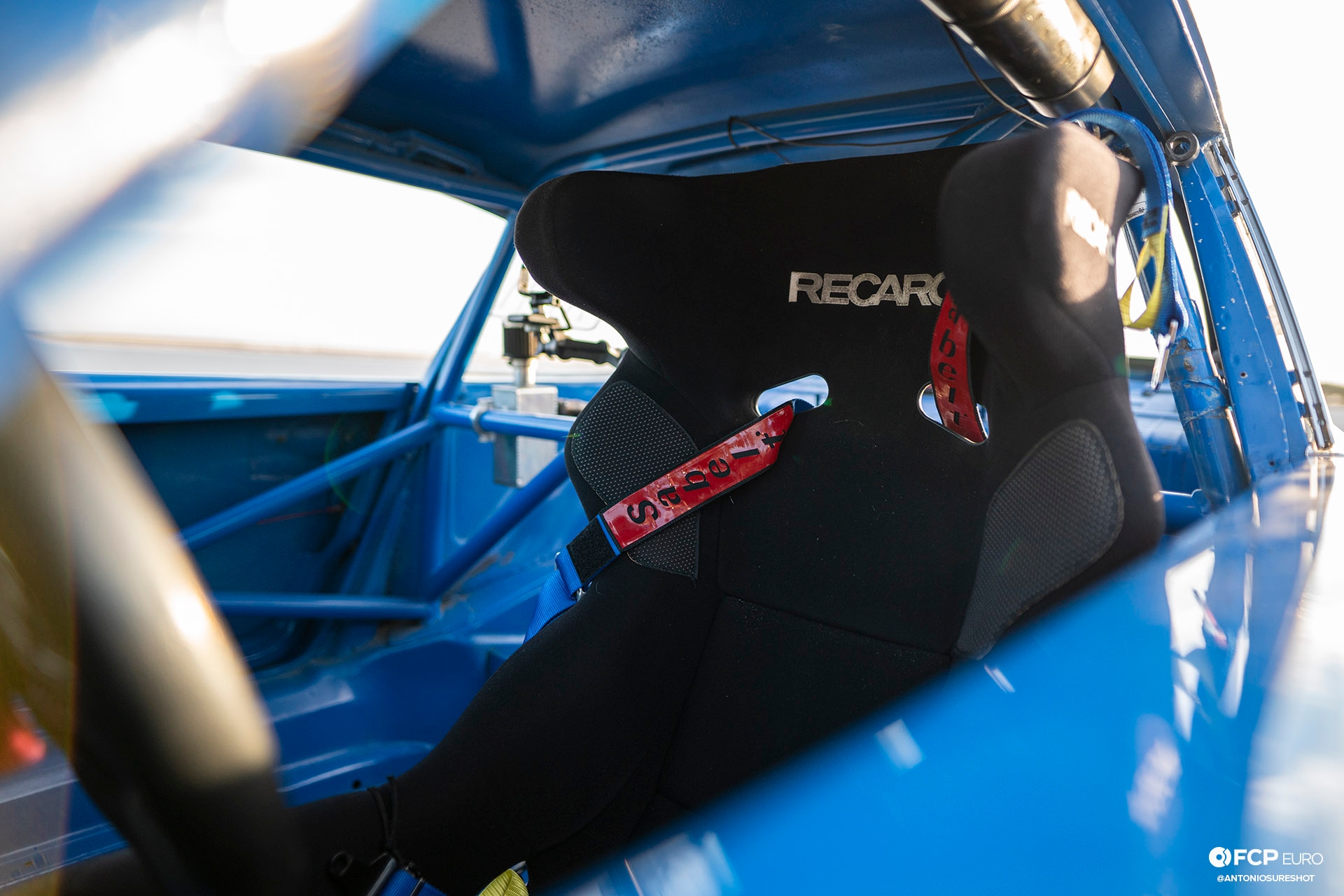
The Recaro seat and Sabelt harness keep Chad from moving around during high-G loads and impacts. You can also see more of the custom-made roll cage and the lack of a passenger seat. Additionally, the doors have been gutted for cage fitment and weight reduction, but the door bars protect Chad from potential intrusion by another vehicle.
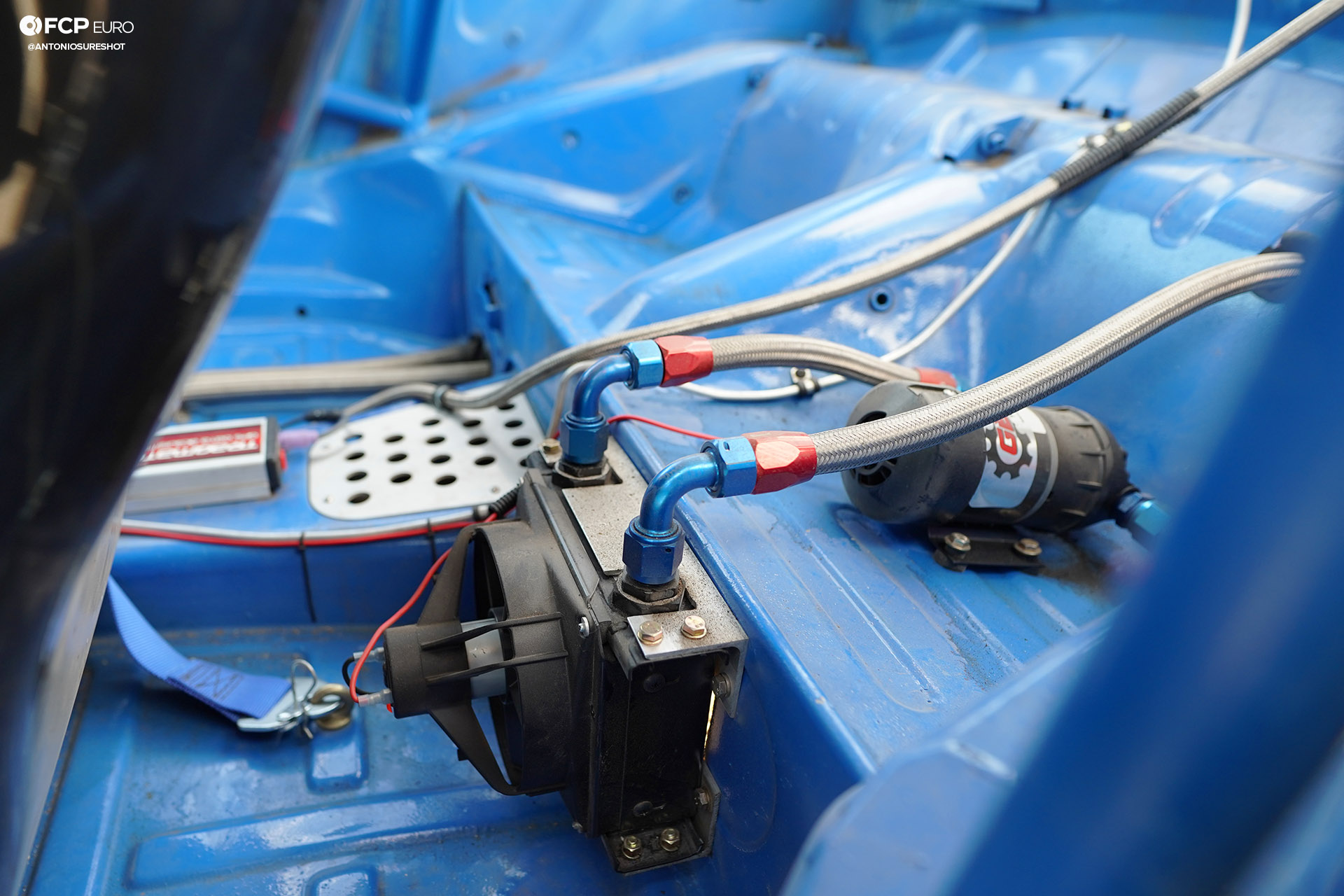
For any air-cooled Porsche, keeping the oil cool is essential. For the race car, it’s mission-critical and Chad added this exterior oil-cooler. It sits just behind him and features a fan that blows air over the heat exchanger. The cooler air from the interior is pushed out to an opening just behind the cooler.
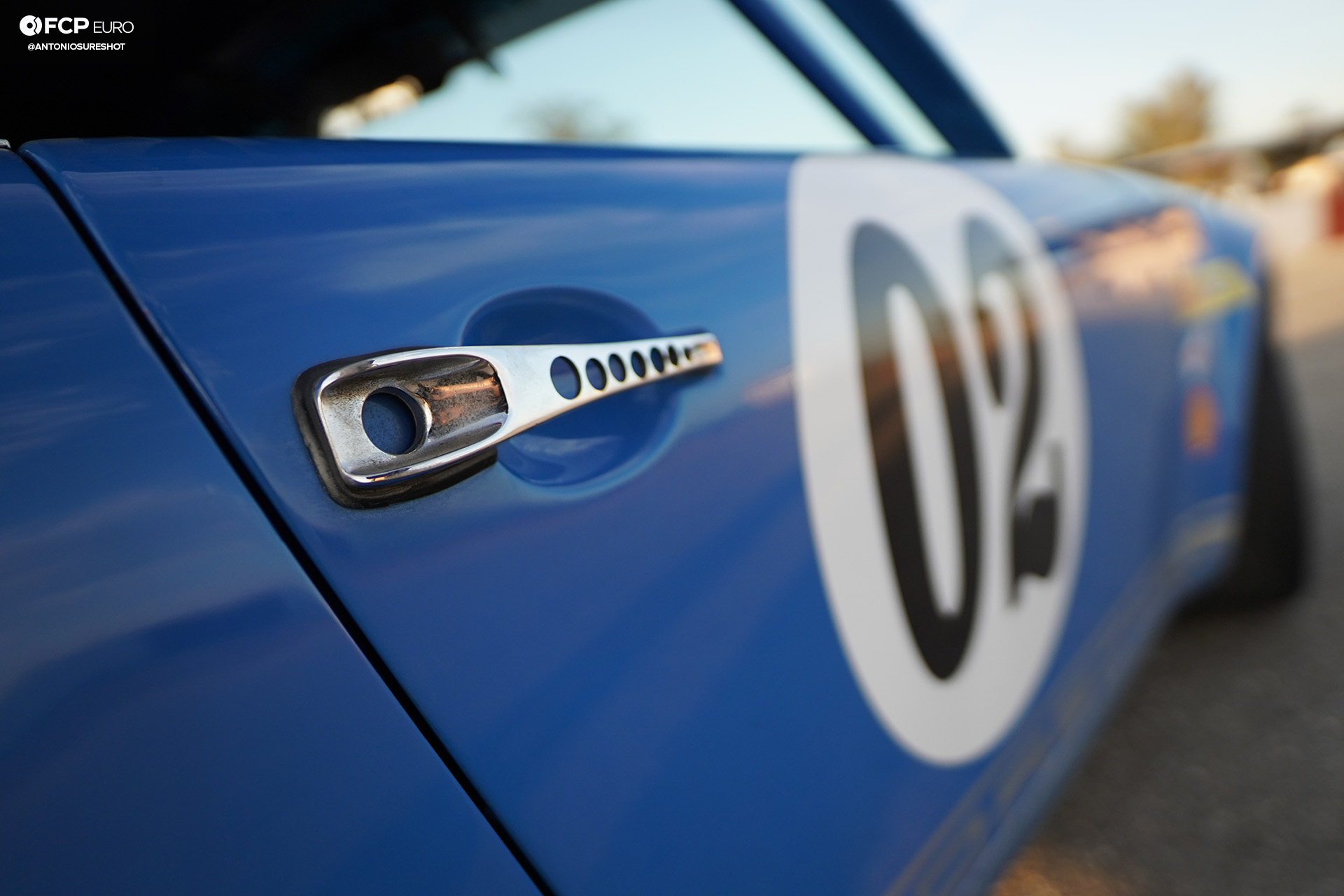
Both weight and period-correct looks are important to a vintage car. While it doesn’t need exterior door handles, they are still installed, but the lock mechanism is removed and the opening in the door is filled while the rest of the handle is drilled out of “speed holes” to reduce its weight.
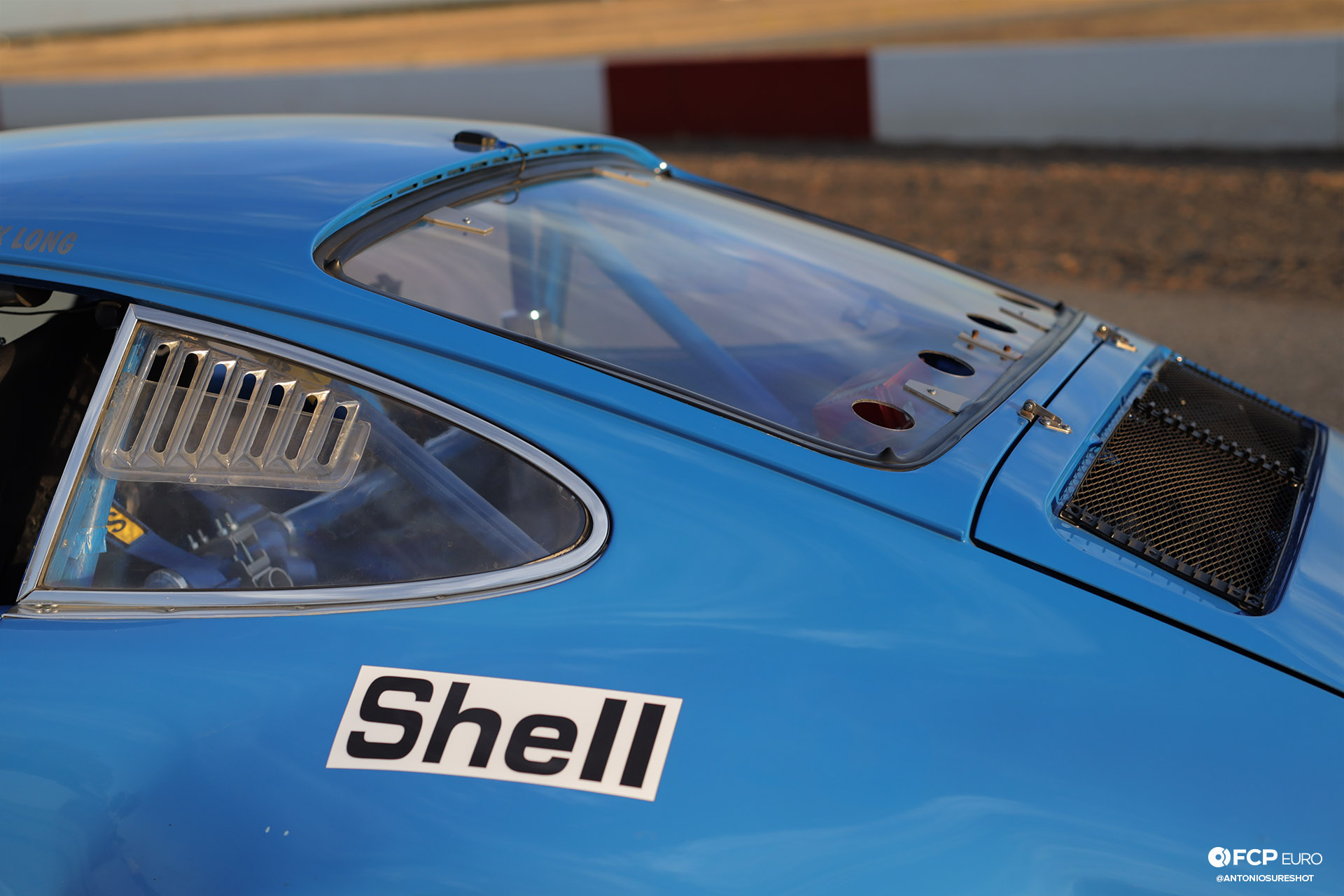
The other thing a race car doesn’t need – vintage or modern – are heavy pieces of glass you find in your road version of the 911. Here, Chad has replaced the windows with Lexan pieces. Additional function is added here as well. The rear quarter louvers and the holes at the bottom of the rear window allow air to escape out of the interior. This is mainly to reduce drag that can be induced due to the open driver and passenger side windows.
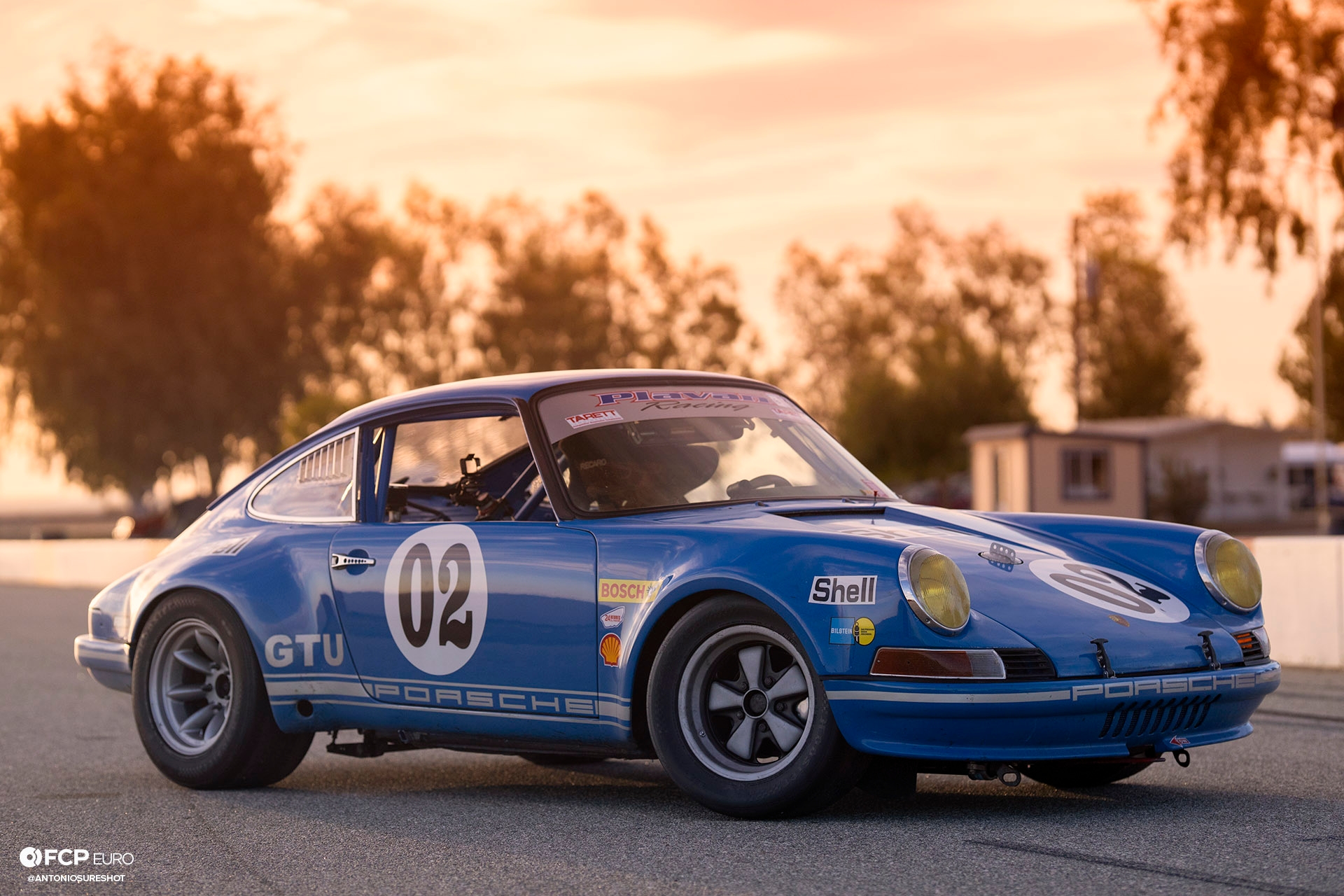
Again, the body has been changed from its original E design to the ST, allowing for much wider wheels and tires. However, the body isn’t the only callback to the 911 ST. The combination of the Fuchs 15x8 front and the Minilite 15x10 rear are also the proper setup for the ST. However, instead of the vintage and lower grip slick tires that would have been on it in 1970 or 1971, it uses modern Hoosier 245/50R15 front and 275/50R15 rear slick tires. However, this can change depending on which series he runs and when.
Underneath those Fuchs are a set of 911 S aluminum calipers with Raybestos ST43 compound brake pads, a racing specific compound. Under the Minilites are stock 911 E calipers, but with matching ST43 pads. It uses Bilstein shocks on all four corners but retains its torsion bar suspension. The front bars are 22mm in diameter while the rear are 31mm bars with Rebel Racing RSR bushings all around. RSR versions of the Tarett front and rear sway bars also help control body roll to ensure those Hoosiers stay planted.

Under the bonnet is an early aluminum E case with a displacement of 2.5-liters built by Allan Faragallah at Aase Motors. The 10.5:1 compression, 90mm bore pistons are installed in a set of modified cylinders. Those cylinders have been “mooned,” in which some of the cylinder skirt material has been removed. This is done to reduce windage in the engine case, which robs the engine of horsepower. The GE60 camshafts bump open 993 intake valves, but both pairs of valves are operated on a set of forged rockers.
The crankshaft is from a 911 T but has no counterweights. You’d think it would have a lot of vibration and kill the engine, but Chad reports it isn’t an issue with these early aluminum cases. So, not only is this crankshaft lighter, it can spin faster. This frees the work of the engine to be used elsewhere instead of putting that work into spinning a heavier crank. You’ll also hear this called a short-stroke (SS) engine thanks to its 66mm stroke crank over the original 70.4mm stroke crank from the 2.4 E engine. The shorter stroke works better with the 90mm pistons and why it has the potential to rev so high. The ignition of the fuel comes from a stock Porsche distributor with the aid of an MSD Blaster ignition coil.
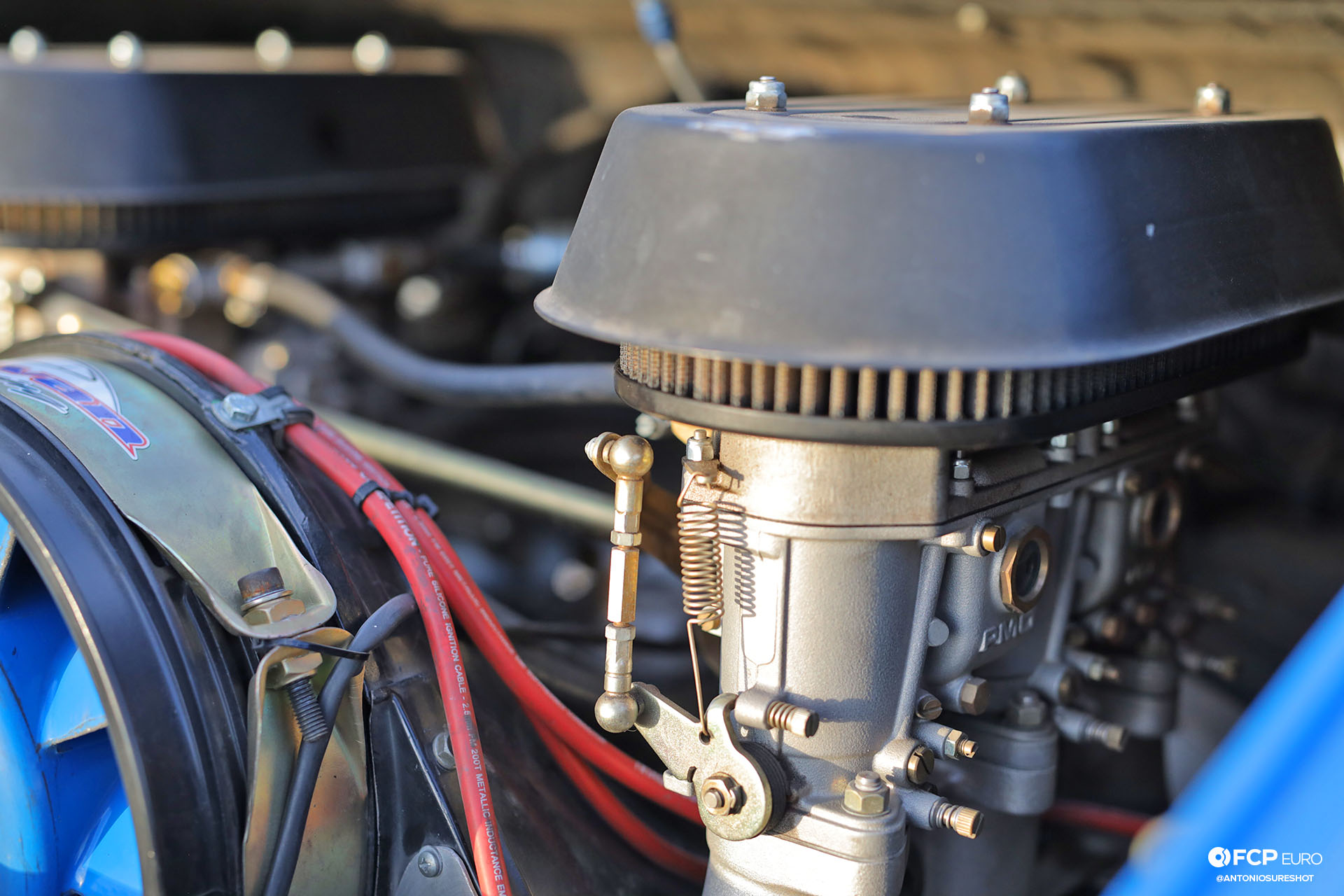
Atop the engine sit a pair of 46mm PMO carburetors, which have individual bores for each cylinder much like a Weber IDA, but are made of A-356 aluminum over die-cast metal. The entire assembly with its 2.5-liter displacement pushes out 211-horsepower and 168-ft-lbs of torque to the wheels. Yes, that’s after going through the 901 transmission, which is fitted with a Guard GT LSD, Aase/Tilton racing clutch, and a racing specific gear set.

Being a racecar, you also are able to hear this 911 sing properly. Well, provided you’re not racing at Laguna Seca.
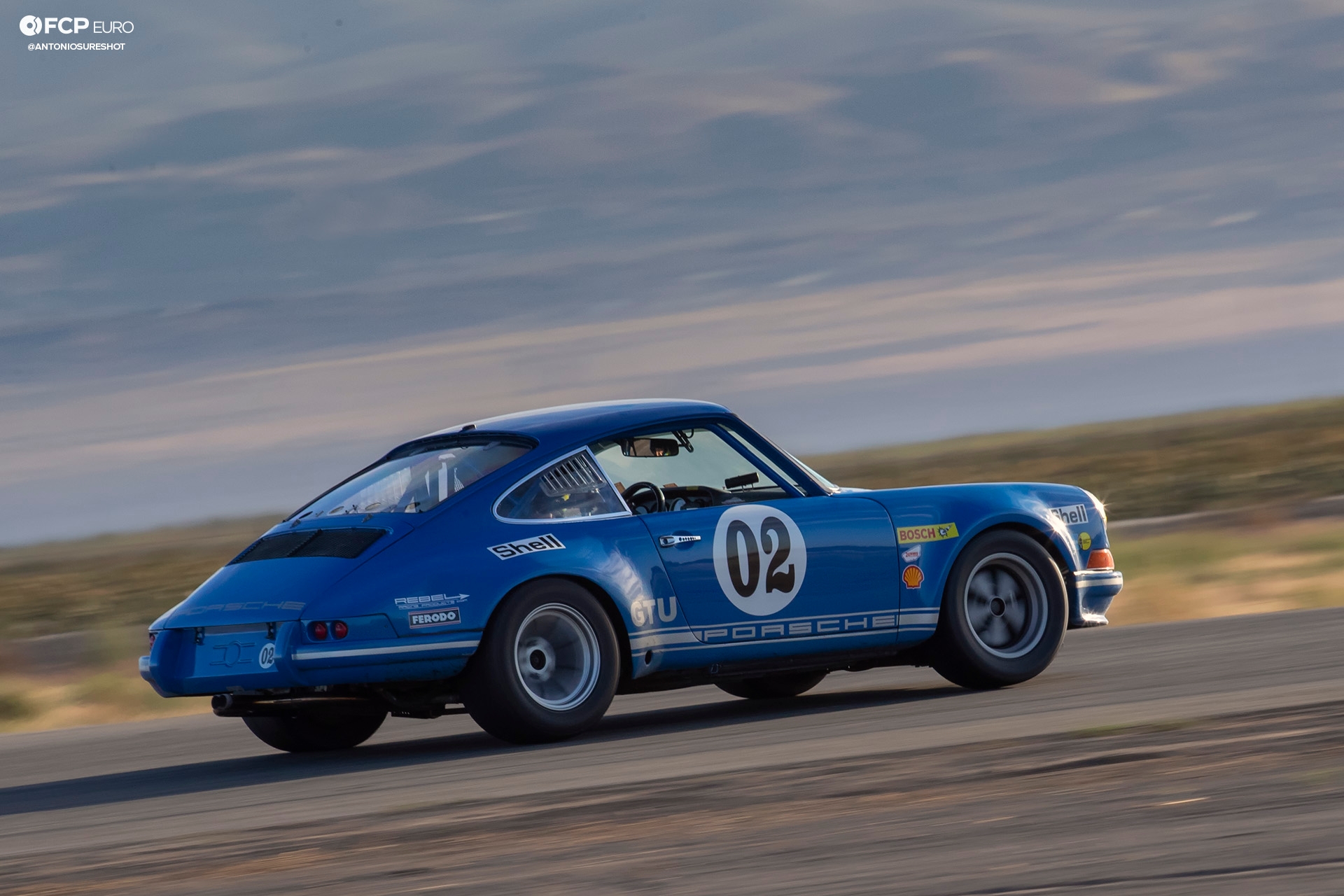
Of course, the race track is where this Porsche lives. While Chad is the owner and primary driver, this classic 911 also gets driven by Porsche factory drivers. This includes Southern California’s own Patrick Long, who drives for Porsche at Le Mans and IMSA. “Patrick has raced my 911 ST, including when it was a narrow body,” explained Chad, “It was during a two-hour enduro with me in 2007. We were leading the race, but it ran out of gas with one-and-a-half laps to go.” Chad added, “Patrick loves this car and even built a street version of it – color and all.”
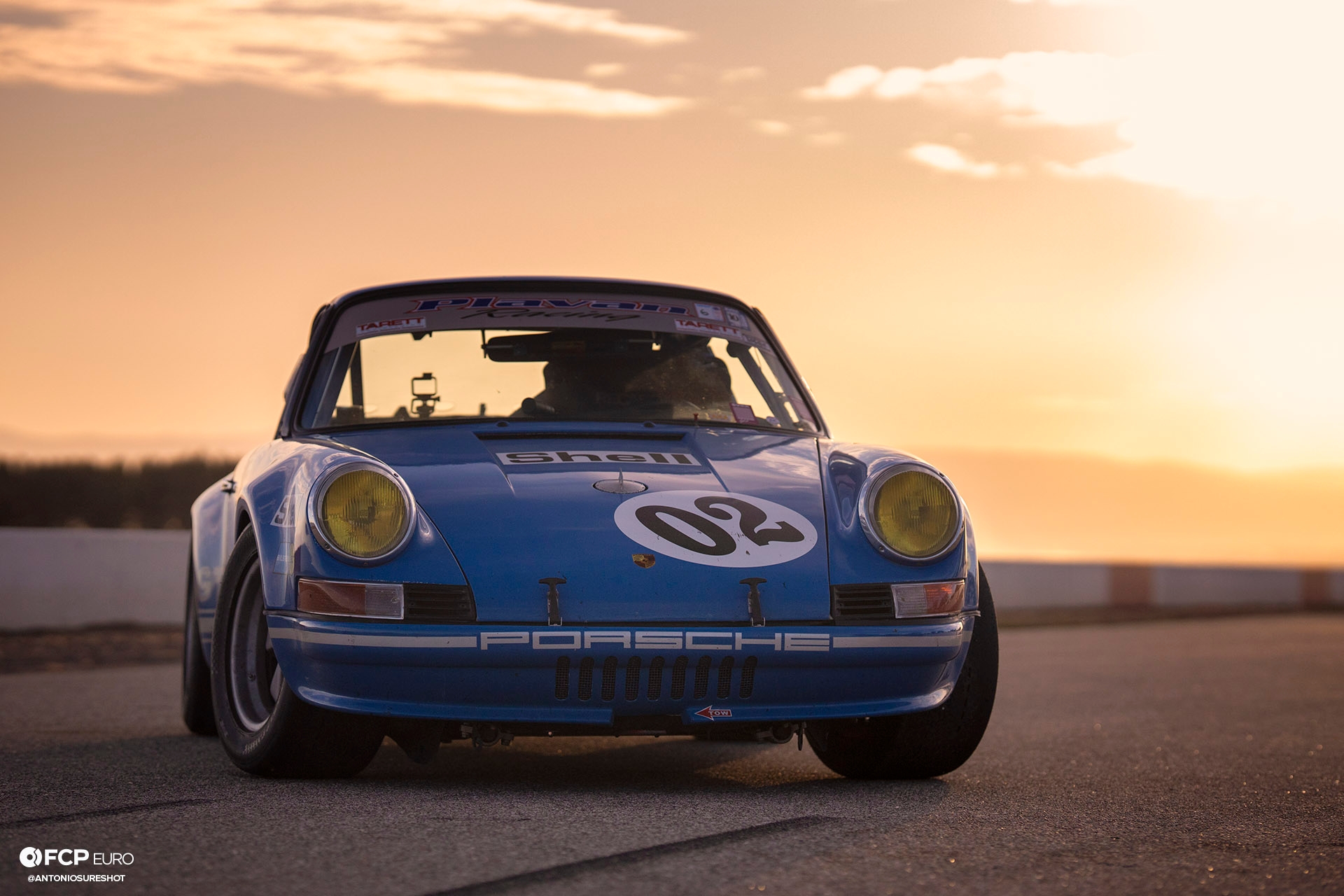
Even with the accolades of famous P-car drivers, there is more to Chad’s race car than that. “My whole family raced vintage 911s when I first built this car,” he said, “We had four 911s racing in the family, so building a vintage Porsche race car was the only choice.”
Still, he couldn’t ask for a better car. “Just the fact that the car is a Porsche,” he explained, “a lot of the hard work is already done. It is a proven chassis and manufacturer for racing. My car, though, is perfect in my opinion. It has the perfect color, stance, shape, and sound. It’s a complete package.”
The skyrocketing value of the early 911 is starting to affect how often Chad races the car. While he admits that he’s fortunate enough to own other race cars, they just don't feel the same as this blue 911. The sound brings a smile to faces of corner workers as they hear that 2.5 screaming out of the apex. The spectators just love watching that classic blue Porsche work on track, as it dices through the other cars as if they were standing still. Chad says it’s perfect the way it is, and we agree. You won’t find cars like this anymore and this is why we’re glad he still takes this 911 out on track today.
Story by Justin Banner
Photos by Antonio Alvendia
If you enjoyed this classic 911, you can find additional Porsche-related content at porsche.fcpeuro.com, as well as more build features like this one, here. If there's anything specific you would like to see, or if you have any questions/comments, leave them in the comments section below.


